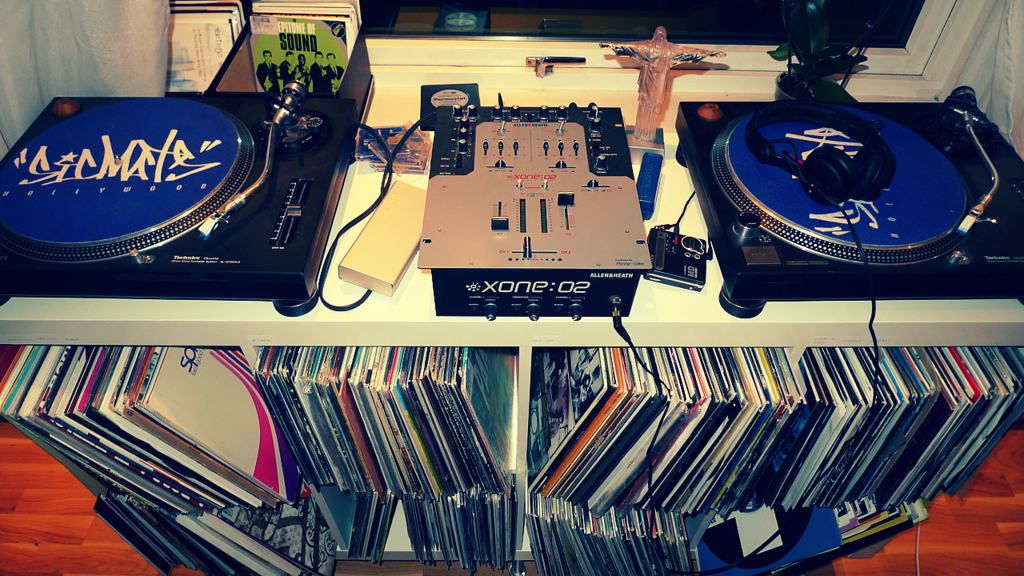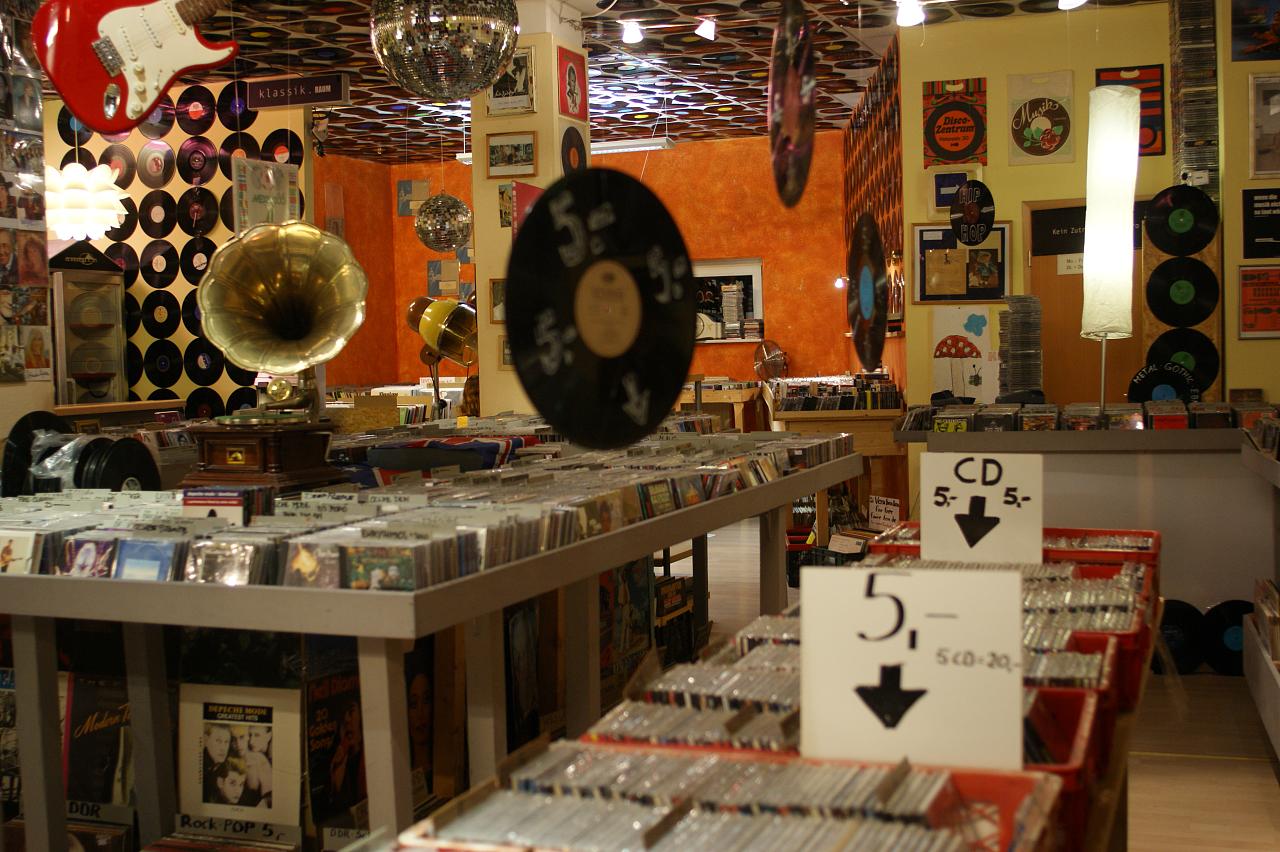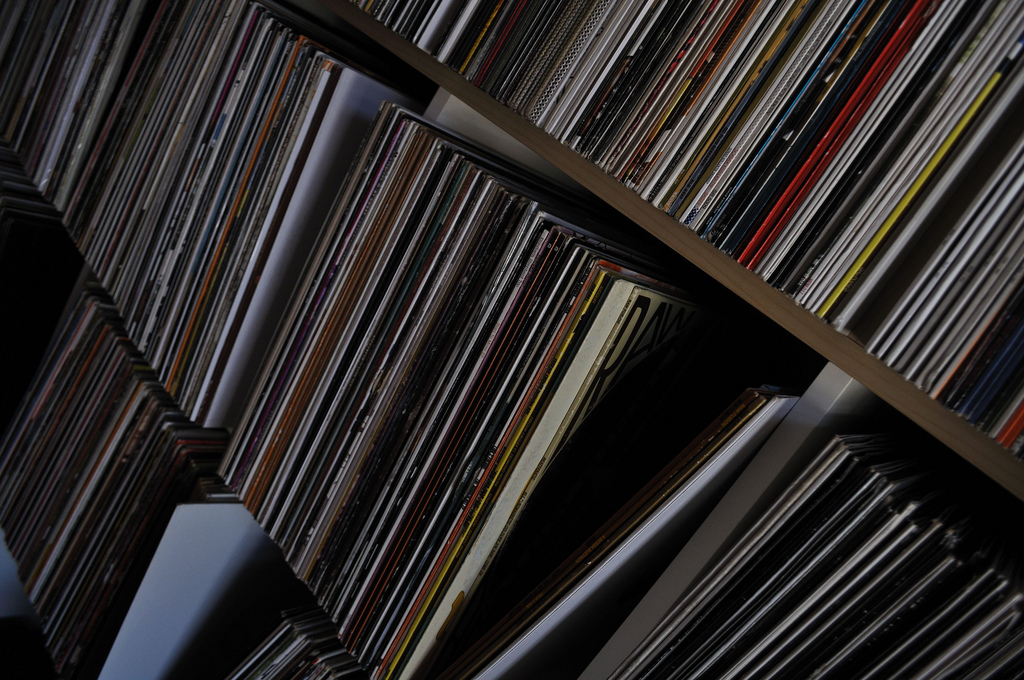Contents
- Buying to Invest - A Growing Trend
- Where Vinyl Scores
- Where Vinyl Falls Down
- The Resurgence of Vinyl
- Potential Collectibles
- How to Judge the Quality of a Used Record
- Types of Collector and Key Market Segments
- How to Buy Vinyl Online
- How to Store Vinyl
- Vinyl-Selling Strategies
- So are you cut out to be a vinyl guru?
- Useful Resources
People buy music to enjoy it, right? Well that might be true in a vast majority of cases, but there are niches in the market which a small but sizeable minority of folks are looking to exploit for the potential returns available as an investment.
Buying to Invest - A Growing Trend
Sharp-eyed buyers are keen to exploit a wide range of products and niches in the hope of being able to make a profit.
This is hardly new, but the current economic background of low interest rates, meaning poor returns on money tied up in savings, along with a general mistrust of financial institutions, and the difficulty many people are experiencing in getting on the property ladder - let along being able to buy properties from which they can earn an ongoing income - are combining to encourage savvy individuals to look elsewhere for products which can earn them a competitive return on their investment.
We've seen it in everything from stamps to collectable vehicles, and while professional investors will continue to look foropportunities in the likes of coffee and oil market futures, many people will, rightly, ask where the fun and fulfilment is to be found in ploughing money into these areas?
Because, with many of the current, growing niches in the investment market, the accent has changed from merely what can be bought to be sold on for a healthy profit, to products which can also be enjoyed in their own right.
Where Vinyl Scores
Previous generations have grown up with the idea that the music which they consumed came in a tangible form - whether that was a vinyl record, plastic cassette or eight-track, or compact disc.
But with music increasingly inhabiting a digital, virtual world, many young people are growing up without ever owning a single physical object which contains music in the way their parents - and many before them - remembered doing so.
Yet vinyl records, and to a lesser extent the cassette and the compact disc, were often seen as an extension of the performer's personality or personalities. And especially when it came to the designs put on the covers of these records, they would let their imagination run riot - and usually, within the boundaries allowed by good taste and the laws of the country in which the record was to be sold - be allowed to do so by their record company, in order to come up with a cover which would attract the casual browser when they were leafing through racks of other albums or singles in their favourite record shop.
That initial image was designed to say something about the performer whose work could be found inside the sleeve, and the images and words which went onto the sleeve gave everyone a clear idea of what to expect when they got their record, cassette or CD home, and put it on to play.
Spotting the Cracks
As many people soon began to find out, one drawback to accumulating a vast collection of vinyl records was that they took up quite a lot of space and, when collected in large quantities, were also heavy.
This meant that moving them from one house to another - if this was ever needed - presented a logistical headache.
And it's a big reason why many of the new generations of collectors are much more choosy about what they buy.
Another difficulty with vinyl was that it could literally wear out. A record might be played so much that its grooves began to lose their definition. Or, if the owner was generous enough to lend them out to their mates, there was always the risk that they would be returned scratched, so spoiling the enjoyment of the music etched into the grooves.
The Resurgence of Vinyl
Vinyl might have disappeared completely, apart from in the memories of the people who hankered after the days of the double gatefold sleeved album, had it not been for the dance music scene.

The realisation of many dance music DJs in the early 21st century that the format lent itself to use for producing a package of several versions of the same track, and for making infinite variations on it was responsible for this renaissance.
Because the playing time of each side of a piece of vinyl could vary considerably, it was seen as a good way of incorporating a variety of remixes, and other material, onto a single release. Not only this, but a new generation of DJs discovered what their predecessors already knew - that a vinyl record could be easily faded or temporarily halted, so that they could talk over the top of it, or even mix a completely different tune over it. Where they advanced the craft, though, was in overlaying a number of other sounds onto that original song, and in turn creating something which, while sounding familiar, had a completely new twist to it.
And of course, this sound became integral to the pop music scene at the end of the 20th century, and continues to be well into the 21st.
Potential Collectibles
Predicting which items will become desirable with current or subsequent generations of collectors is the holy grail for the investor.
One factor which is sure to spark extra interest - and there's no way of beating about the bush here - is the death of the performer, or a member of the band.
It has been seen many times, such as after August 16, 1977, the day when Elvis Presley died. Presley had been a massive musical icon, and although much of the output of his later years is critically derided, almost overnight record labels scrambled to re-release versions of every track he had ever recorded - particularly as the laws of copyright in the middle part of the 20th century were nowhere near as strong as they are today.
Because his earlier works, stretching back nearly 20 years, were hugely popular, yet had been out of print for some time, original copies of many of them suddenly became hugely collectable.
This was one of the first occasions when people who, up to that point had merely seen records in the context of the enjoyment they got from the music they contained, began to realise that they also could have some historic significance.
Just as with just about any other kind of item which people find desirable, there is a multitude of factors which make a vinyl record collectable - and it's about far more than just how popular the artist was at the time the record was made.
Sleeve artwork which is considered to be attractive in its own right - or possibly is just controversial - is one factor which makes a record collectable, and although beauty is in the eye of the beholder, there are examples of this which are considered more desirable than others.
Venerable music magazine The Rolling Stone in 1991 compiled a chart of what its writers considered the 100 best album covers of all time, with the top five spots shared by The Beatles, The Rolling Stones and The Sex Pistols. All the albums on this list have gone on to attract premium prices when sold or auctioned.
A further factor which has a bearing on the likely collectability of a vinyl record is the quantity in which they were originally pressed. Over the years, there have been many limited-edition records produced, often by artists who have already become well-known, and possibly as a reaction to the way records had become such a mass-market product.
By telling their audience that there will only ever be a certain number of a particular record in circulation, or in a particular format, such as on coloured vinyl, the artists concerned were guaranteeing that that record would become of interest to keen collectors in later years - and especially those who were too young to have the chance to buy them first time around.
How to Judge the Quality of a Used Record
With any vinyl record, its appearance matters to a collector. As a result, if a sleeve is still intact, free from bends and creases, this is a good starting point.
But the condition of the vinyl itself is all-important, which means that, in order to be able to determine a record's worth, you will need a turntable on which to play it, as this will detect imperfections which can't be seen by the human eye.
When compact discs were first produced, a great deal of the marketing surrounded the fact that their sound was considered richer and clearer, and listening was a more involving experience than doing the same with a vinyl LP. Not only this, it was also suggested that CDs would last longer than vinyl records, simply because playing them involved no direct contact between the disc and the player, unlike a vinyl record, where, of course, a needle has to be in constant contact with the grooves on the disc in order to transmit the sounds contained in them.
But several decades of being able to compare the two has resulted in a distinctly divided camp. Some are confirmed modernists, favouring the CD, while others - often people who are too young to remember the heyday of vinyl - vouch for the experience of listening to music carved into that piece of round plastic.
Much of the difference has nothing to do with the record or CD itself, but is more down to the quality of the equipment on which it's being played. It follows that, if you intend to collect vinyl for listening to, shopping around for the best quality record player you can afford is not just a good idea - it's essential.
Many people who are seasoned vinyl dealers and collectors are, quite rightly, keen to encourage new entrants into this fascinating pursuit. As a result, when they are selling vinyl records, they realise that its condition has a bearing on the price they will get for it.
Therefore, they will price their vinyl according to its quality. A record which has been barely played, and whose sleeve and inner are in pristine condition will be more expensive than one which has clearly been extensively played, and perhaps not well looked after. Often, sellers put a 'grade' on their vinyl when it is put up for sale, to indicate what they believe is a fair summary of its condition. But as there is no set standard for this, it is difficult to judge for yourself.
Types of Collector and Key Market Segments
In their broadest sense, the people who are interested in vinyl records fall into two camps - those who collect them for what they look like, and those who are more interested in what they sound like.
The 'object collectors' will hunt down records whose merits are not merely musical. Instead, they will go for the most desirable sleeves, the different coloured vinyls, and even possibly, for the work of one particular performer. In this last case, they might already have that artist's complete repertoire in another format - CD or MP3, for example - so the condition of the vinyl could be of secondary importance.

The other, more numerous, type is the collector of the music itself. Lots of young people have, through having easy access to massive amounts of music in digital form, discovered the work of many artists who were popular in previous eras. Often, in these times, music was produced on vinyl records in far greater quantities than in any other medium, so this is the format which is easiest for them to collect, and so that is how they have started an interest in doing so.
When it comes to how the vinyl market is split, this will be familiar to many older people, because it is often divided according to different music genres. This was usually how the displays of vinyl in a record shop were arranged - although there was a great deal of crossover between such categories as 'rock', 'progressive', 'folk' and 'contemporary'.
In less enlightened days gone by, it was usually believed that buyers were only interested in one type of music, which was why old-style record shops usually categorised their music in this way. The ultimate backlash to this was the punk and new wave movement. Part of the motivation of many of its performers came about because they did not want their music to be categorised, or at least, for it to be associated with anything which had gone previously. Of course, this soon backfired, when anything which the bands of this era produced was given its own category - most commonly referred to as 'punk/new wave'.
Another consequence of the explosion of punk rock was that artists suddenly started to self-finance the production of their music. Many believed that it was more important to simply be able to release the music they wanted to, rather than have it dictated to them by a record company. As a result, vinyl enjoyed a renaissance through punk, and the fact that many of the bands which the era spawned did not stay together for long, so did not produce large amounts of music has made a great number of vinyl records from this period of the mid to late-1970s and early 1980s particularly sought after.
How to Buy Vinyl Online
Because the condition of a vinyl record is paramount to most collectors, you might think that buying online, where a potential purchaser doesn't have the chance to examine a record beforehand, and has to take the word of the seller on its condition, is full of pitfalls.
Generally, however, people who sell vinyl online are trying to build and sustain a legitimate business. They realise, perhaps more importantly, that, through the internet, their customers have plenty of opportunities to voice their opinions of them - and sellers of sub-standard items might quickly find themselves the subject of some uncomplimentary reviews which can, of course, then be seen by anyone.
So before plunging in and making a purchase, always check out reviews and buyers' ratings of a seller, noting any remarks about the quality of both the products sold, and the way in which they deal with the customer and answer any queries.
A record buyer should be keen to answer questions of someone if there is anything they particularly want to know; and a reputable seller won't be offended by such questions - instead, they should be polite and helpful, taking the view that any new customer could potentially become a regular buyer.
How to Store Vinyl
This was something to which many of the original generations of record-buyers paid little attention. This was almost certainly because they never intended to accumulate a vast collection, and so would not consider spending even more on such items as purpose-made record cases, or plastic sleeves to protect their vinyl.

Nevertheless, anyone who is today buying with the intention of gaining a return of their investment should seriously consider either finding a room or other space in their home which they can dedicate to storing their records.
In the heyday of vinyl, houses nearly always included some pieces of furniture which offered space on which to stand a record player, as well as further room for storage of the records themselves. Anyone who is looking to keep their vinyl in optimum condition, and be able to file it for easy future reference, might therefore be wise to invest in something similar.
And with the current trend for retro furnishing in homes, such a storage unit would fit in well!
Otherwise, generally vinyl records should be stored in a cool room, and kept well shaded, not least because direct sunlight has been responsible for fading the artwork on many thousands of album sleeves.
Vinyl-Selling Strategies
To make a success of your investment, when it comes to realising its worth, this is all about proper targeting, although on rare occasions - as in the example of Elvis Presley mentioned above - timing can also play a part.
Therefore, you should scour the internet for sellers who deal in particular types of music, and specific eras. Not only will they be familiar with the genre of music you are selling, and quite probably the specific artist - you will also, over time, be able to strike up a better rapport with them which can help inform your own buying decisions.
Building a constructive relationship with a few record dealers in this way might result in you learning some 'tricks of the trade' and marketing strategies of your own.
Above all else, when selling vinyl, you are dealing in a commodity. To be successful, you have to take the same steps, and gather the same information, as anyone else doing this - be it baked beans or rare Be-Bop Deluxe albums. Namely, you have to determine the following:
- The size of the market for that commodity
- How you can best reach the people who are active in it
- What you need to do to engender their trust
- The criteria they use for making their buying decisions
- What factors persuade them to become repeat buyers
- How serious each individual investor is - meaning, how much they're likely to want to buy from you
- Whether you merely want to sell as a sideline, or make a full-time business of it, and
- How you intend to keep your customers as happy as possible.
So are you cut out to be a vinyl guru?
Simple, eh? Well, not exactly. But then, there are few absolute certainties in life. Death and taxes are two, but whether choosing to invest in any type of collectible item, isn't another.
Apart from that, if you have a real love of music, and aren't put off by the thought of gaining an encyclopaedic knowledge of at least some of it - or already believe you have it, and want to put it to good use - the chances are that you will enjoy trading in vinyl.
You will certainly encounter groups of people who are interested in their subject to the point of obsession - which is where that encyclopaedic knowledge will come in useful - and, in time, might even make many new, interesting and long-lasting friends.
"Welcome back my friends, to the show that never ends; We're so glad you could attend, come inside, come inside."
Those words, from Emerson, Lake & Palmer's song 'Karn Evil 9', sum up the welcome you might find as a dealer in classic vinyl. So if the idea piques your interest - and you want to get to know all there is to know about the aforementioned ELP, and many more, even if you've never heard of them before - vinyl collecting and dealing could be for you.
Useful Resources
The following resources may be useful.
Price guides –
· http://www.discogs.com/ - Great resource for finding records, you can sell them through discogs and also use it to see what price a record is going for
· http://www.popsike.com/ (Tool for estimating value of records - shows you what they have sold for on auction)
· http://www.rarerecordpriceguide.com/
· http://www.vinylrecordfair.com/price-vinyl-records.html (Canadian based value estimator)
Collectors Associations –
· http://www.recordcollectorsguild.org/
Preserving your vinyl –
· http://www.linnrecords.com/linn-vinylcare.aspx
· http://en.wikipedia.org/wiki/Vinyl_disc_records_preservation
· http://www.loc.gov/preservation/care/record.html
· http://presrec.com/vinyl.htm
Magazines, blogs and articles –
· http://www.artofmanliness.com/2012/10/10/let-the-vinyl-spin-my-journey-into-record-collecting/ (Nice article on collecting records)
· http://www.vinylandcocktails.com/ (Great blog on collecting records)
· http://recordcollectormag.com/
·


.svg)

